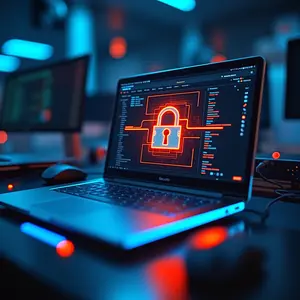End-User Computing Services
Comprehensive end-user computing services: device procurement, deployment, management, support, and security. Ensure your team has the tools they need to succeed.
What Are End-User Computing Services and Why Are They Essential?
End-User Computing (EUC) Services encompass the technologies, tools, and support systems that enable users to access applications, data, and desktops securely and efficiently from any device or location. These services include desktop virtualization, remote desktop services, mobile device management (MDM), desktop as a service (DaaS), software deployment, and IT support. Think of EUC as the digital equivalent of providing every employee with a modern, flexible, and secure workstation tailored to individual workflows—whether in the office, at home, or on the move. Technologies such as Microsoft Endpoint Manager, Citrix Virtual Apps and Desktops, VMware Horizon, and Azure Virtual Desktop empower centralized control over user environments while maintaining scalability and compliance. According to Forrester, 68 percent of enterprises have adopted some form of desktop virtualization, while Gartner reports that 56 percent of employees now access corporate systems remotely at least once weekly. Consequently, EUC is not just a convenience; it is the backbone of modern productivity and business continuity. It also plays a significant role in improving employee satisfaction by providing them with the tools and flexibility they need to perform their best.

How Do Virtual Desktop Infrastructures Improve User Experience?
Virtual Desktop Infrastructure (VDI) centralizes the desktop environment within a data center or cloud platform, allowing users to connect to a consistent and secure desktop from any device. Unlike traditional local desktops, VDI provides the ability to manage updates, enforce security, and deliver resources uniformly across the organization. Session-based or persistent virtual desktops can be configured depending on user roles. A healthcare group implemented VDI to replace outdated physical workstations but failed to allocate sufficient GPU resources for clinical imaging applications. This oversight caused a system lag and reduced diagnostic efficiency. After reconfiguring with hardware-accelerated graphics and load balancing, performance improved significantly. Moreover, HIPAA compliance was reinforced by logging session activity and encrypting remote display protocols. Accordingly, VDI supports performance, flexibility, and compliance when tailored to workload requirements.
What Role Does Device Management Play in EUC?
Mobile Device Management (MDM) and Unified Endpoint Management (UEM) solutions are central to controlling access, enforcing policy, and securing data on corporate and BYOD devices. Platforms like Microsoft Intune, Jamf, and IBM MaaS360 offer remote configuration, geofencing, application control, and remote wipe capabilities. Device management is critical when endpoints are geographically dispersed or personally owned. One marketing firm distributed mobile devices to a remote sales team but failed to enroll them in MDM. Within weeks, unauthorized applications were installed, and one lost device led to a data breach. Implementing Intune, conditional access policies, and automatic compliance enforcement brought control and visibility. CCPA retention policies archived audit logs. Consequently, robust device management prevents data leakage and enforces consistent endpoint posture.
What Happens When EUC Services Are Inadequately Implemented?
Ineffective EUC deployments lead to security vulnerabilities, user frustration, inconsistent access, and elevated support costs. A law firm migrated to cloud desktops but neglected to provision adequate storage IOPS for simultaneous logins. Users encountered lag, profile corruption, and missing files. The rollback to on-premise systems caused downtime and disrupted client deadlines. The resolution involved performance benchmarking, profile containerization using FSLogix, and session load distribution. Moreover, role-based access controls were refined to align with SOC 2 Type II audit requirements. Notwithstanding the initial deployment failure, corrective action produced a streamlined, secure experience. This experience underscores the importance of strategic planning and load testing, which are vital to avoid resource bottlenecks in the EUC architecture, making the audience feel prepared and proactive in their approach to EUC deployment.
How Is Security Maintained Across Distributed End-User Environments?
Security across EUC environments relies on encryption, identity management, endpoint hardening, network segmentation, and continuous monitoring. Multi-factor authentication (MFA), single sign-on (SSO), and biometric logins add layers of identity validation. One accounting agency relied on simple password-protected access to their virtual desktops, which led to credential stuffing incidents. Post-incident response included the implementation of SSO through Azure Active Directory, geo-restriction policies, and encrypted session recording. In addition, all user endpoints were hardened using CIS benchmarks, and a centralized SIEM platform was introduced. PCI-DSS data access and retention standards were satisfied by enforcing session timeout policies and isolating payment-related applications. Accordingly, consistent security controls are indispensable across every device, user, and connection.

How Do EUC Services Improve Operational Agility?
EUC services streamline provisioning, onboarding, and application deployment, which shortens time-to-productivity for new employees and supports rapid scaling. Automated workflows assign device configurations, access levels, and software libraries based on user profiles. A financial consultancy expanded rapidly across regions and could not maintain consistent desktop experiences. The shift to DaaS allowed new consultants to receive standardized environments upon login, regardless of location. Software updates, antivirus definitions, and permissions were applied through group policy and endpoint management templates. Moreover, the environment supported internal controls and auditing for FINRA compliance. Consequently, EUC improves organizational agility while preserving uniformity and oversight.
What Tools Support Application Delivery in EUC Models?
Application delivery within EUC models is managed using layering technologies, application virtualization, and containerized deployment. Solutions like Citrix App Layering, VMware App Volumes, and MSIX reduce software conflicts and simplify patching. Applications can be streamed or presented within isolated sessions to minimize overhead. A design firm attempted to install all software locally on VDI images, which led to bloat and frequent updates disrupting work. Transitioning to application layering, separated base OS, middleware, and design tools, streamlining patch cycles and reducing image size by 40 percent. Moreover, licensing compliance improved through automated usage tracking and access control. Accordingly, modular application delivery enhances performance and reduces operational friction.
What Support Services Are Needed for End-User Environments?
Support services must include proactive monitoring, helpdesk integration, automated ticketing, and remote remediation. Self-service portals allow users to reset passwords, request applications, and log incidents without waiting for IT intervention. A manufacturing business outsourced EUC support but failed to establish SLAs or escalation paths. As a result, downtime extended during outages, and employee satisfaction declined. Implementing ITIL-based support workflows with defined metrics, knowledge base articles, and chat-based triage improved resolution speed by 52 percent. Moreover, compliance documentation for internal audits was automated through ticket logs and resolution notes. Consequently, reliable and responsive support structures are integral to the end-user experience and regulatory accountability.
What Long-Term Value Do End-User Computing Services Provide?
End-User Computing Services deliver long-term benefits, including cost reduction, improved security, enhanced mobility, simplified management, and better user satisfaction. According to IDC, companies implementing EUC solutions report a 45 percent drop in endpoint-related security incidents and a 32 percent reduction in IT support hours. A logistics enterprise transitioned to virtual desktops and MDM, resulting in centralized control over 1,200 endpoints and eliminating annual licensing waste across redundant applications. User onboarding time dropped from five days to less than one. Moreover, audit preparedness improved due to consistent configurations and detailed reporting. Consequently, EUC transforms IT from a reactive function into a strategic enabler of productivity and resilience.
Just Two of Our Awesome Client Reviews:
Bridget Evans:
⭐️⭐️⭐️⭐️⭐️
“For years, we struggled with inconsistent user setups, security gaps, and long provisioning times. Reno Cyber IT Solutions rolled out a complete EUC strategy that changed everything. Their use of virtualization and endpoint management gave us visibility and control we never had before. Our team works smarter and safer now.”
Curtis Lassingame:
⭐️⭐️⭐️⭐️⭐️
“Remote work was chaotic before we partnered with Reno Cyber IT Solutions. They brought virtual desktops, locked down access with MDM, and trained our team on best practices. We now have secure access from anywhere, and support has never been faster or more effective. It was a total transformation.”
Want consistent access, better support, and stronger security for every user in your organization?
Contact Reno Cyber IT Solutions for a free consultation and discover how our End-User Computing Services can help standardize, secure, and simplify your digital work-spaces.
👉 Learn more about our Reno-based Managed IT Services, and let’s deliver a better computing experience—one desktop at a time.
End-user computing services encompass the support and management of the technology that employees use on a daily basis, including desktops, laptops, mobile devices, and the software applications they rely on. These services are crucial for ensuring workforce productivity, providing efficient technical support, and maintaining a secure computing environment. Effective end-user computing management includes device procurement and deployment, software installation and updates, help desk support for technical issues, and the implementation of policies that promote usability and security. The goal is to empower employees with the tools they need to perform their tasks effectively while minimizing disruptions and maximizing their technology experience.
In today’s interconnected world, security is a paramount consideration within end-user computing services. IT service and cybersecurity providers offer expertise in securing endpoints against a wide range of threats, including malware, phishing attacks, and data breaches. This involves implementing security software, managing user access and permissions, enforcing security policies, and providing employee training on cybersecurity best practices. By taking a proactive approach to end-user computing security, organizations can protect sensitive data, prevent unauthorized access to their systems, and maintain a resilient and secure operational environment for their entire workforce.
Ready to Secure and Support Your Business?
Your Reliable, Compliant, and Secure IT Partner:
Ready to Support and Secure Your Business Every Step of the Way.
